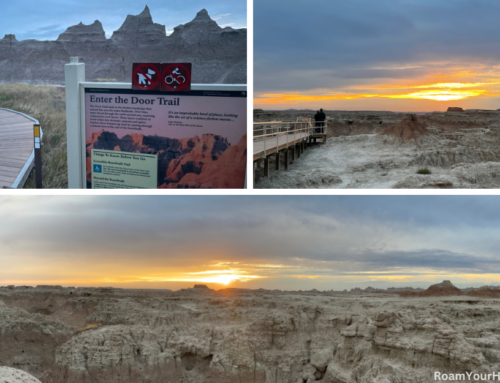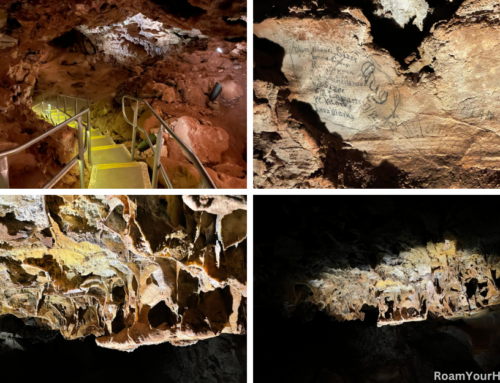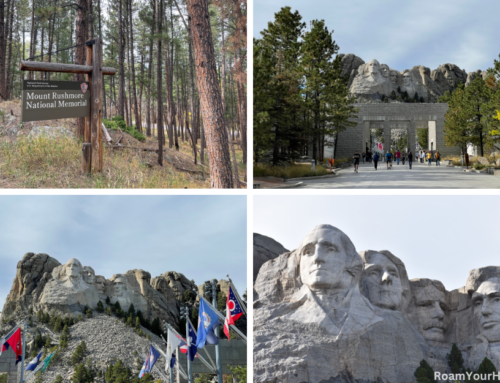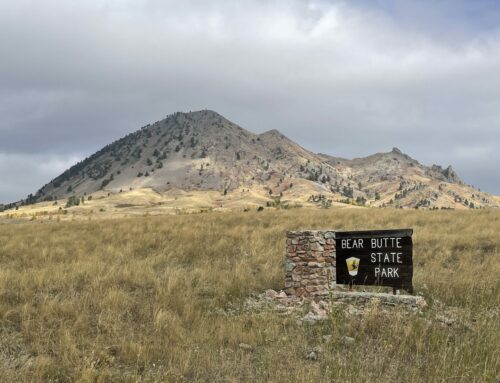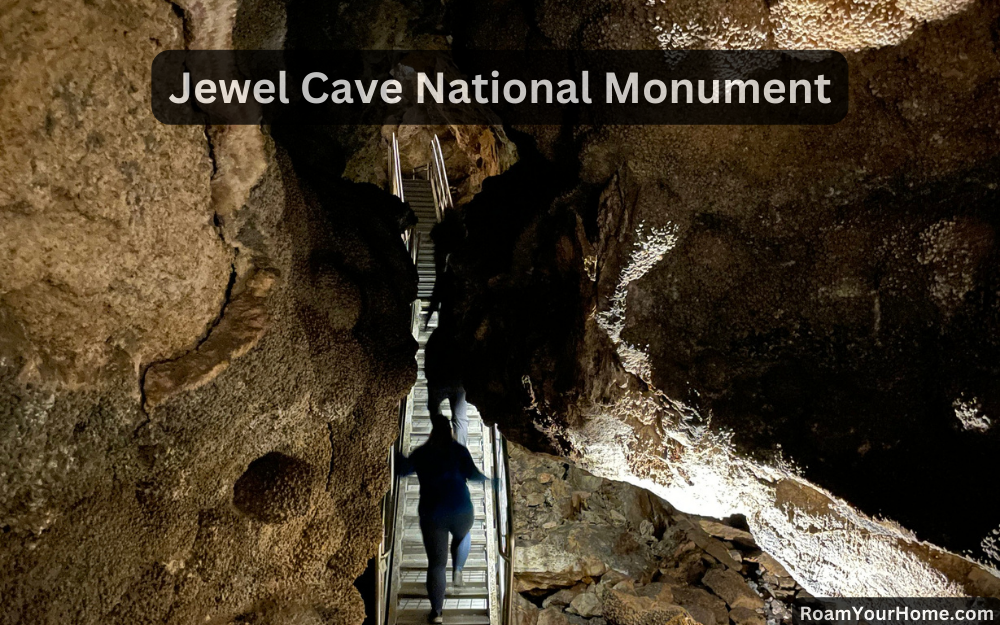
Explore Jewel Cave, the worlds 5th largest cave
Jewel Cave National Monument is located in the Black Hills of South Dakota near Custer. Despite being a national monument for more than 110 years, the cave is often overlooked by visitors to the area.
Jewel Cave has more than 215 miles of mapped passages, making it the world’s 5th-largest cave. What is fascinating is that it’s estimated that the discovered areas of the cave represent only 3 to 5 percent of the total volume of the cave. The cave volume is calculated by measuring the amount of air that the cave “exhales” and “inhales.” Jewel Cave is considered a “breathing cave,” which means air enters or exits the cave with changes in atmospheric pressure from day to night or from changes in the weather.
Jewel Cave History
Jewel Cave was discovered by local prospectors Frank and Albert Michaud when they found a hole in the canyon with cool air blowing out of it. After making the hole large enough for a person to fit through, they discovered a cavern lined with stunning calcite crystals that sparkled like “Jewels” in the lantern light, naming it Jewel Cave. The prospectors filed a mining claim on the “Jewel Lode” but knew the calcite crystals were not worth any money, and no other precious minerals were found. But they did realize one thing: the cave’s beauty was ripe for tourism. Over the next few years, they built a trail in the cave and a lodge on the canyon rim and tried a variety of ideas and gimmicks to attract tourists. Ultimately, this would prove unsuccessful. The area was too remote and difficult to access at the time to attract many people. Tourism may have initially failed, but an interest in protecting and preserving the cave had reached Washington DC, and on February 7, 1908, President Theodore Roosevelt declared Jewel Cave a National Monument.
Jewel Cave Exploration
Each year, the known length of Jewel Cave grows by a few miles as a dedicated group of volunteers and park staff continue to map new areas. Cavers will often spend four days and three nights in the cave, all for the chance to do something truly rare in the modern world. The opportunity to be the first person in history to set foot in a new passage inspires them to keep exploring. Many of the mapped miles of Jewel Cave have been explored relatively recently. In 1959, less than two miles of the cave had been explored, despite being a National Monument since 1908.
“The excitement of discovery, the elation and despair. The thrill of pushing forward to discover what is there.”
-Jan Conn, Jewel Cave explorer
That would change soon; however, in 1959, local climbers Herb and Jan Conn began exploring the cave. Within 20 years, they had discovered and mapped more than 64 miles of previously unknown passages. In fact, an area they found would become the Scenic Tour Route, which remains the most popular tour in the park. It’s the one we took, and it’s incredible!
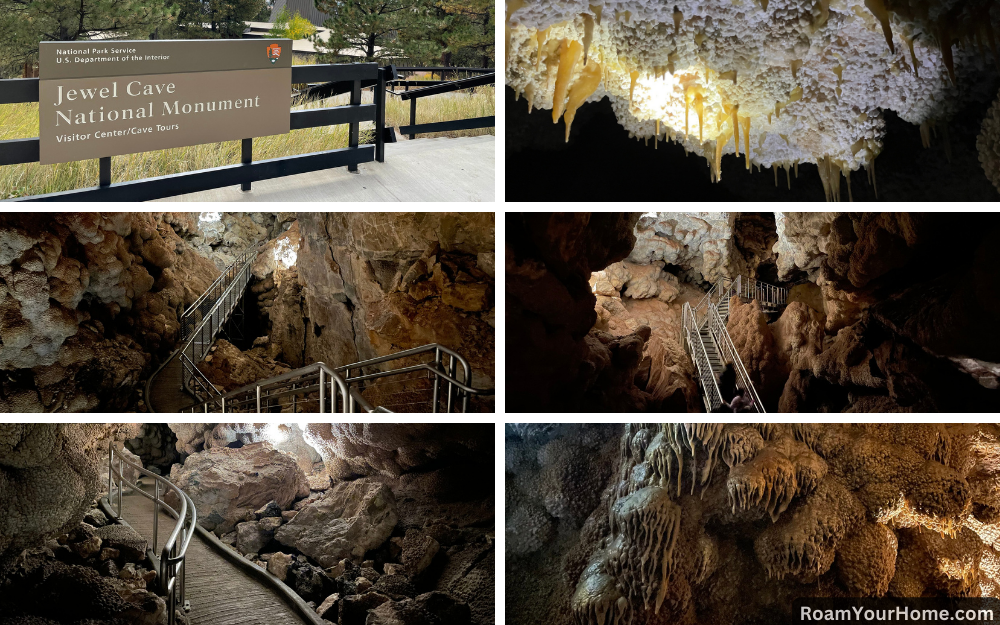
Jewel Cave Scenic Tours
The Scenic Tour takes about 1 hour and 20 minutes. It’s about a half-mile loop but does involve negotiating up and down 734 stairs. During the ranger lead tour, you will see two calcite crystals: nailhead spar and dogtooth spar. These are the “jewels” of Jewel Cave. That’s not all, though. You will also see a variety of stunning formations, including boxwork, cave popcorn, flowstone, stalactites, stalagmites, draperies, and a long ribbon drapery called cave bacon. Reservations are recommended because the tours do sell out. Wear closed-toed shoes and bring a jacket if you get cold easily. Jewel Caves stays at 49 degrees year-round.
Other Cave Tours
There are other tours available as well. The Historic Lantern tour gives you a sense of what it was like to tour the Jewell Cave many years ago. The tour begins at the historic entrance; the only light provided is a lantern. The tour is a half mile and lasts about an hour and 45 minutes. The Discovery Tour is perfect if you have limited time at the monument. It’s a 20-minute ranger-guided tour providing an excellent cave introduction. You can expect to see plenty of calcite crystals. The Wild Caving Tour is for the very adventurous. It would be best if you were in good shape as you must be able to pass through an 8.5-inch by 24-inch crawl space before beginning the tour. That’s because if you decide to do this tour, you have to be able to fit through some tight spots. Expect to spend three to four hours underground as you army crawl through sections with names like Roller Coaster, squeeze into the Brain Drain, climb Martha’s Kettle, and feel the wind on your face at Hurricane Corner. Reservations are available for all tours, and there is a fee.
Hiking Jewel Cave National Monument
Above ground, there are plenty of things to do at Jewel Cave. The Roof Trail starts at the visitor center and is only a quarter-mile loop. It’s a great way to stretch your legs while waiting for your tour to begin. The Canyons Trail is perfect for those looking for a longer hike. The trail is a 3.5-mile loop that weaves through Lithograph and Hells Canyon. The open meadows along the Canyon Trail are perfect for viewing a fantastic display of wildflowers. In 2000, a wildfire burned 90 percent of the monument, so protection from the sun is rare. Plan accordingly if you are thinking of hiking. There is no camping in the park, but plenty is nearby
Things to do near Jewel Cave National Monument
Custer State Park
Wind Cave National Park.


